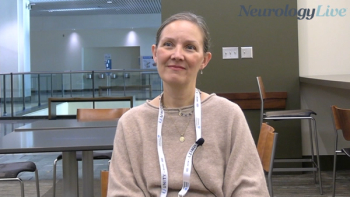
Essential Protein for DNA Virus Replication Identified by CHOP Investigators
Investigator Matthew Charman, PhD, told CGTLive™ that the new knowledge of the viral replication process could potentially inform the development of future gene therapies.
The adenovirus 52 kDa protein (52K) has been identified as essential in the formation of biomolecular condensates from viral structural proteins, shedding light on the complex process of DNA virus replication, according to research carried out by investigators at Children’s Hospital of Philadelphia (CHOP) that was published today in Nature.1,2 The investigators believe that the new knowledge could potentially inform the development of future
The research focused on the role of phase separation in the viral replication process, specifically regarding the relationship between particle assembly and capsid assembly. Prior to the study, it was known that membraneless compartments, referred to as biomolecular condensates (BMCs), in virus-infected cells form via phase separation; however, the functional role of this process in virus replication was not known.
The investigators utilized green fluorescent protein-tagged 52K in in vitro studies with Escherichia coli to examine the role of 52K in the formation of BMCs. They determined that 52K is a necessary component of viral BMCs, and to study its role further, the investigators ran experiments in which they infected human bronchial epithelial cells with a viral mutant that does not express 52K, referred to as Δ52K. They found that viral genomes and proteins accumulated in levels similar to what would be expected with a wild-type virus, but that viral BMCs did not form.
“We find that the assembly of human adenovirus progeny particles is a highly coordinated process,” lead author Matthew Charman, PhD, a research associate in the Weitzman Lab at
The investigators also used bioinformatics to identify an intrinsically disordered region (IDR) in 52K which was determined to be likely to play a role in the phase separation process. They ran experiments with 4 mutated forms of the protein with different modifications to the IDR and determined that the region plays a key role in phase separation based on the failure of 2 of the mutant proteins to form nuclear bodies when expressed in cells. In particular, the proline-rich spacer region of the IDR was identified as essential for viral progeny production. The investigators also carried out observations and experiments to examine the location of 52K during the formation of BMCs in the viral infectious cycle. From these analyses, they determined that BMCs coordinate assembly of viral progeny.
Charman and colleagues concluded that phase separation of 52K is essential for the organization of capsid proteins into nuclear BMCs, and that this process is in turn necessary for the formation of complete viral particles packaged with viral genomes; thus, the phase separation process contributes functionally to the production of viral progeny in adenovirus infected cells. The investigators identified an area of interest for future research, noting that the frequency and nature of interactions between phase-separated proteins, and their role in establishing a starting point favorable to genome packaging and capsid assembly, should be investigated further. They additionally pointed out that the viral assembly process could be useful for further study of functional phase separation and emphasized that the process could be of potential interest for therapeutic intervention.
“For many DNA viruses, how progeny particles are assembled within infected host cells is something of a black box,” Charman added. “When we wish to produce virus for use as a tool, we typically start an infection in cultured cells, wait for the virus to replicate, and then harvest the resulting progeny. If we wish to tailor the virus to a unique application, we are often limited in how much we can attempt to modify the virus. If we change the virus too much, it usually ‘breaks’ viral replication, and we misassemble or fail to assemble our tools. This is a huge limitation when developing effective viral vectors, particularly in the gene therapy field. One aim of our research is to dissect and define the fundamental processes involved in viral assembly, with the ultimate goal of using this knowledge to develop better gene delivery tools.”
REFERENCES
1. Charman M, Grams N, Kumar N, et al. A viral biomolecular condensate coordinates assembly of progeny particles. Nat Med. Published online April 5, 2023. doi: 10.1038/s41586-023-05887-y
2. CHOP researchers reveal complex assembly process involved in DNA virus replication. News release. Children’s Hospital of Philadelphia. April 5, 2023. Accessed April 5, 2023. https://www.prnewswire.com/news-releases/chop-researchers-reveal-complex-assembly-process-involved-in-dna-virus-replication-301789225.html
Newsletter
Stay at the forefront of cutting-edge science with CGT—your direct line to expert insights, breakthrough data, and real-time coverage of the latest advancements in cell and gene therapy.











































